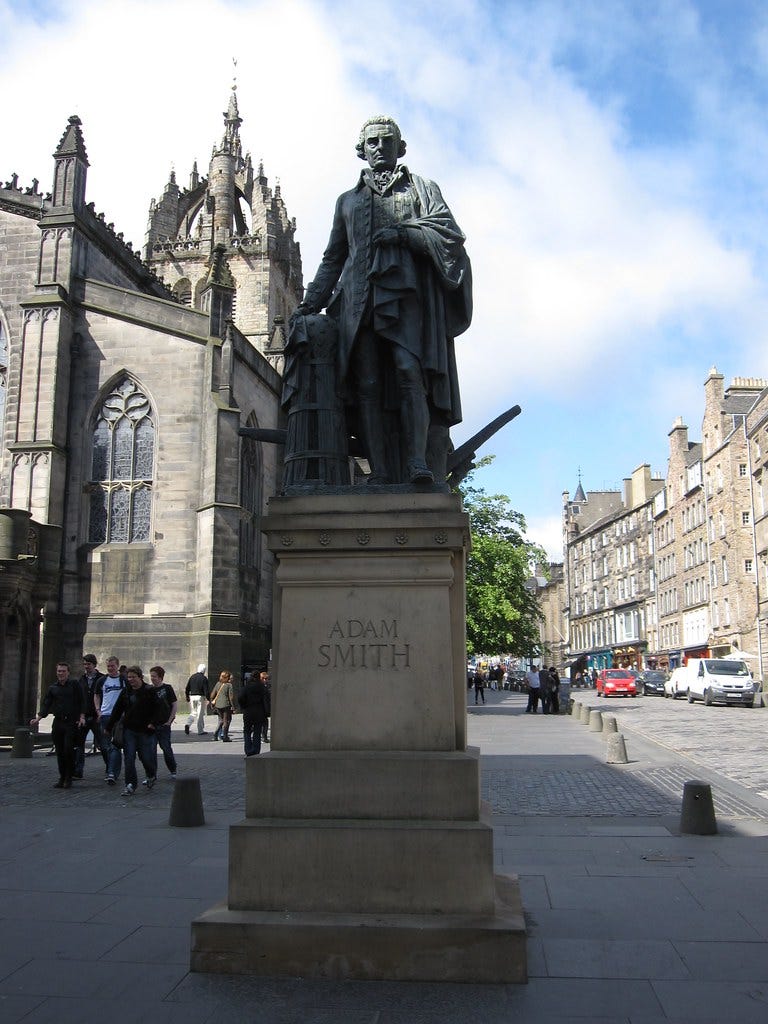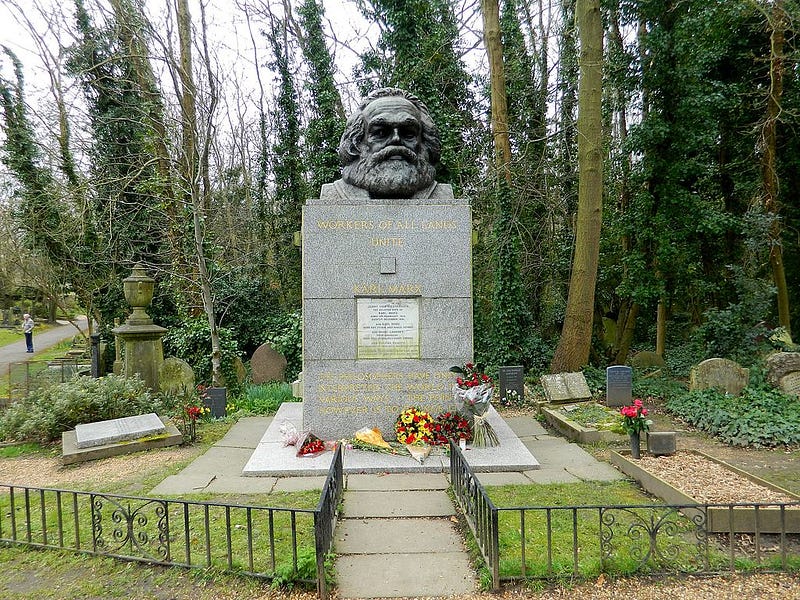Part 1 of a Discussion of Peter Foster’s Why We Bite the Invisible Hand Chapter 1 “Cardboard Cut-out Capitalism”
The title of journalist Peter Foster’s book definitely captured my attention: Why We Bite the Invisible Hand.
The invisible hand is a metaphor from Adam Smith that we use in economics to describe how the economy works.
Smith was describing the idea that people acting in their self-interest make decisions about how to earn and spend their money that ultimately result in an optimal allocation of our scarce resources.
People often confuse self-interest to mean selfish, but that was not Smith’s meaning. We are all naturally self-interested in that we try to make the best of the situation we are in. We do not have to take it further than that to selfishness, where we make decisions concerning only ourselves even if it is causing harm to others.
Another way to understand the difference is that Smith believed in virtue ethics, a philosophy that holds people need to develop their moral character by practicing virtue. This includes virtues like justice, prudence, and courage.
Prudence means weighing costs and benefits of your actions. If it is your only virtue, you might make decisions that harm others as long as it is good for you. So prudence on its own could lead to selfishness.
But a moral person would also develop justice, where they would consider how their actions affect others.
When Smith is discussing the invisible hand metaphor he is presupposing the system functioning within a moral society.
A business needing to dispose of wastes has a self-interest in finding the most prudent way of doing that, but if they also believe in justice, they will not go farther into selfishness where they dump it somewhere causing harm to others.
I loved the invisible hand metaphor when I first heard it years ago because it shows that decentralized market forces act as if there was an invisible hand guiding it. In fact, when we combine this observation with F. A. Hayek’s knowledge problem we see decentralization is optimal.
The knowledge a central planner would require is immense and not fully available no matter how fast our computers become. The invisible hand is communicating to us through price signals as we decide what we want to buy and how we want to make money.
We do not need to know why prices rose, but given they did, it indicates this resource is more precious. Buyers who can do without or use substitutes are encouraged to do so. Sellers who can increase their output or enter the market are encouraged to do so.
That is the invisible hand guiding people to independently decide what is in their self-interest in the face of rising prices.
Now imagine being the central planner — how do you know which people should substitute away from the good? How do you know which people can enter into the market and increase output?
This knowledge is spread out across all the people, only known by them. Often, they only know it once the circumstance arises. They could not tell you today how they will respond tomorrow when things change.
All of this is to give my high level support for what we call capitalism, the system that provides the most freedom to individual people to follow their self interest and result in the best use of our resources.
It is what made me interested in doing a chapter by chapter review of Dierdre McCloskey’s Bourgeois Equality.
And it is what is interesting me now in Peter Foster’s book.
Foster is asking the question, why is there so much hostility in our culture towards capitalism if it is the system that has massively increased our standard of living? Thus the allusion in his title to biting the hand that feeds us.
He starts his chapter with many examples of this hostility.
Two movies in 2006, The Pursuit of Happyness, and 2007, American Gangster, are cited.
I had not heard of the latter, but according to Foster it depicts a Harlem drug lord and his heroin smuggling operation during the Vietnam War. Foster points out that the reviews and press about the movie equated gangsters and crime with capitalism. (p. 14)
- “…like most mob films, [American] Gangster is a study in extreme capitalism”
- “Frank Lucas is a stone killer. He’s also a thriving capitalist.”
- his success comes from “operating in the old-fashioned tradition of can-do American capitalism.”
And many more quotes are given that show the mainstream press’ acceptance that criminality is the same thing as capitalism.
In contrast, Will Smith’s film told the story of a poor man overcoming poverty to set up his own Wall Street brokerage firm. (p. 15)
Here, the reviews were hostile to this true example of capitalism. (p. 15)
- a “thinly veiled apologia for rat-race capitalism”
- a “blind faith in the benevolence of capitalism”
- “creepy”
Foster concludes,
So a successful black gangster is a “capitalist,” while a successful black capitalist is just plain “creepy”? Are you beginning to see a little cultural bias here? (p. 15)
Foster notes the attacks on capitalism have morphed over time. In the late 1800s to early 1900s, the symbol of the evil of capitalism would have been a top-hat-wearing rich man. (p. 16) Think of the guy from the Monopoly board game in the picture above.
As the Marxist dream of labor rising up and overthrowing the top-hat-wearing capitalist died, anger has been redirected to new scapegoats.
Today, the case against capitalism — although still occasionally dressed up in a top hat — has morphed toward an assault on giant “faceless” corporations rather than on the bourgeoisie, and toward accusations for destroying the environment rather than (merely) exploiting workers and the state. (p. 16)
So why all the hate for capitalism, a system that has yielded extreme increases in the standard of living? Foster explore that further in this chapter, which I will discuss in the next blog.
Reference: Foster, Peter, 2014. “Cardboard Cut-out Capitalism” Chapter 1 of Why We Bite the Invisible Hand, Pleasaunce Press.




